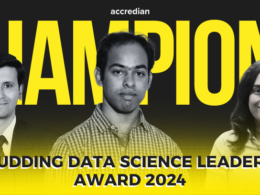Understanding how machine learning algorithms work is critical to maximizing ROI. This is going to be a 2 part blog series. So without further adieu, here is Part-2 of the Top 9 Machine learning algorithms that work to influence keyword ranking, ad design, content construction and campaign direction:
Top 9 Machine learning algorithms
5. Decision Trees
Decision trees are used for predictive modeling. For a marketing analogy, as a user moves through a sales funnel, they’re likely to apply a few criteria:
- Behavior-based triggers – the user clicked or opened a link or field
- Trait-based values – demographic, location, and affiliation information about the user
- Numerical Thresholds – having now spent X dollars, the user is more likely to spend ‘X+’ in the future.
The simplicity of decision trees makes them valuable for:
- Classifications and regressions — plotting binary and floating values in the same model (ex. Gender vs. annual income)
- Handling many parameters at once — each ‘node’ in a tree can represent a single parameter without the entire model being overwhelmed
- Visual and interpretive diagnostics — it’s easy to see patterns and relationships between values
Note: the more nodes you add to a decision tree, the less interpretive it becomes. You eventually start losing sight of the forest for the trees.
6. K-means clustering algorithms
K-means clustering algorithms are a part of unsupervised learning partitioning methods. In Layman’s terms, this means it’s a type of machine learning that can be used to break down unlabelled data into meaningful categories.
So, for example, if you owned a supermarket and wanted to divide your entire set of customers into smaller segments, you could use K-means clustering to identify different customer groups.
This would then allow you to create specific marketing campaigns and promotions targeted to each of your customer segments, which would translate into more efficient use of your marketing budget.
What makes K-means clustering unique is that it allows you to predefine how many categories or “clusters” you’d like the algorithm to produce from the data.
7. Convolutional Neural Networks
Convolutional Neural Networks, or CNN for short, are used to help computers look at images the way humans do.
Whereas a human can readily identify an apple when shown an image of an apple, computers merely see another set of numbers and identify an object based on the pattern of numbers that make up the object.
CNN works by training a computer to recognize those number patterns of an object by feeding it millions of images of the same object. With each new image, the computer improves its ability to spot the object.
Now that almost anyone can pull out their phone and take a picture wherever they are, it’s easy to imagine how powerful CNN can be for any kind of application that involves picking out objects from images.
For example, companies like Google leverage CNN for facial recognition, where a face can be matched with a name by observing the unique features of each face in an image. Similarly, CNN is being tested for use in document and handwriting analysis, as CNN can rapidly scan and compare an individual’s writing with results from big data.
8. Naive Bayes
The Naive Bayes (NB) algorithm is built on Bayes’ famous theorem that determines the probability of two outcomes; the probability of A, given B. What makes this algorithm so ‘Naive’ is that it is based on the assumption that the predictor variables are independent.
For marketers, this can be retooled to determine the possibility of a successful lead magnet, campaign, advertisement, segmentation, or keyword, given that you know the relevant features like height, age, purchase history, or big data concerning your customer base.
If you want to get into math, Great Learning gives a wonderful introduction here. Suffice to say, the NB algorithm answers two questions:
- “Is this the type of person to perform X behavior?”
- “Is this the type of content to achieve X outcome?”
NB is mighty when dealing with large amounts of text-based behavior data like customer chatter online.
Feeding customer dialogue through an NB algorithm helps predict product and service reviews, measure social media & influencer marketing sentiment for trends, and predict direct marketing response rates.
9. Principal Component Analysis
Classification leads to evolved segmentations. Principal Component Analysis is used to find strong or weak correlations between two components by plotting them on a graph and finding a trend line.
But what happens when the target market comes with 30+ features? This is where the process of PCA in combination with machine learning becomes incredibly powerful for analyzing multivariate big data sets.
Instead of having two groups that correlate, you start to get clusters correlating with one another, where the distance between clusters now suggests strong or weak relationships.
For marketers, the component axes are no longer single features you choose but determined by the PCA algorithm.
All of this helps to answer the question: “Which features are strongly correlated and can therefore be used for better segmentation targeting?”
Knowing how machine learning algorithms work and learning practical skills via our PGP in Data Science program will provide you with marketing insights and make you better at communicating ad, content, and campaign strategies to your staff, clients, and customers. This will ultimately lead you to better ROI.
With this 2 part series we come to the end. Be sure to read Part-1 for the complete reading experience. If you want to read more such blogs, visit us at www.blog.accredian.com





